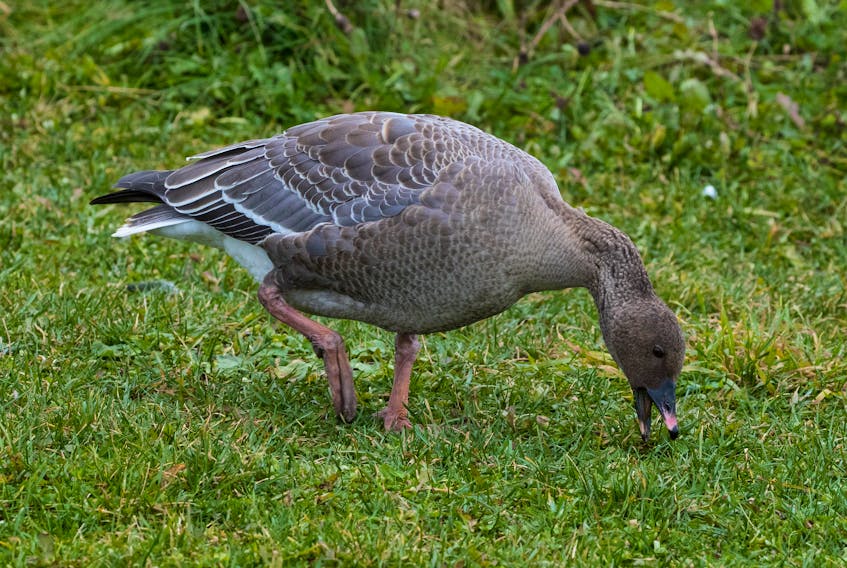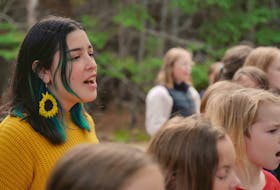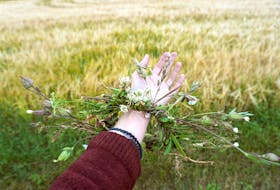November is a dark and dreary month. There is no escaping from the shortening days, the dominating overcast skies and the cooling temperatures of the second last month of the year. Throw in the bombardment of Christmas advertising trying to rush us toward the shortest days of the year in December and it is enough to drive one to think.
Birders think about the silver lining that comes with the November dreariness.

Vagrant birds that strayed off course during the fall sometimes stay to the bitter end before making an attempt to recalculate and execute a plan to get back on track.
Warblers, brightly coloured in yellows and greens, blend in with the green foliage of the summer but stand out like Christmas ornaments after the leaves fall off the trees.
Perfect example of this was four late warblers found on Waterford Bridge Road, St John’s this past Sunday.
All of them were rare species. There was one orange-crowned warbler, one parula warbler and two Townsend’s warblers. Small numbers of orange-crowned warblers occur each fall, but it is easy for an active birder to go an entire fall without seeing one.
The parula warbler is even a little rarer than that. But the two Townsend’s warblers are outright long-distance vagrants.
The species is normally restricted to the far west, nesting in Alaska and British Columbia and spending the winter as far south as Mexico and Central America.
Who knows why these two Townsend’s warblers travelled so far east when all they needed to do was fly due south to hit Mexico and relief for the winter. Seeing them in November is like seeing living, breathing rare jewels.
On Oct. 30, Alvan Buckley noticed a little splash of colour among the juncos in the bare alders on the south side of Renews. It turned out to be a golden-crowned sparrow.
The first record of this species in Newfoundland was not even a year ago in December 2018, also in Renews. Could this even be the same bird returning?
The golden-crowned sparrow is from the same part of the country as the Townsend’s warblers. If only we could see a copy of these birds’ itinerary to know what route they took to get here and where they go next. I am sure we would all be amazed to know what these birds actually do.
For some vagrants it appears obvious how and when they got to the province. When a far-flung purple gallinule showed up in Mary’s Harbour, Labrador, on Nov. 1 there was an intense storm happening with far-reaching southerly winds.
A bird of the Carolinas and Florida, this purple gallinule somehow got caught in the air flow and did not put on the brakes until it hit the coast of Labrador. Totally out of habitat and range the poor bird was taken into care but died overnight.
It was only the second time a purple gallinule has been seen in Labrador.
A glossy ibis is another southern bird that turned up unexpectedly. This time it was on the Northern Peninsula. Without any southern marshland to probe for food it took to the lawns and probed its strong curved bill into the ground for earthworms. The bird showed up at Daniels Harbour and Rocky Harbour before making a temporary home and becoming a local attraction at Cow Head.
Another storm created strong north and east winds over the Atlantic Ocean. Birders were hoping for some European strays. It did not take long for one to show up.
This time it was not found by dedicated birders but by ordinary sane folk out for a walk. It was a pink-footed goose from Greenland. It chose the shoulder of the road leading up to Signal Hill to stop for refuge and refuelling. Hikers and motorist could not help but notice the odd goose grazing on the roadside grass.
Not surprisingly word reached the birding community. The bird was ridiculously tame. We reckoned the bird had never seen people before. It was a bird of the year and had likely been carried of course during its attempt to migrate from Greenland to where most pink-footed geese spend the winter in Scotland. After a few days the goose must have noticed the grass was greener and much more extensive just across the way at the Bally Haly golf course. That is where the bird has moved and should be happy there for a few weeks if it chooses to stay that long.
The Remembrance Day weekend has traditionally been one of the most exciting weekends of the year for birders. With a history of some spectacular rarities showing up around Nov. 11 and birder excitement already high this fall, the anticipation is through the roof.
Bruce Mactavish is an environmental consultant and avid birdwatcher. He can be reached at [email protected].
RELATED:








